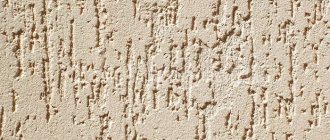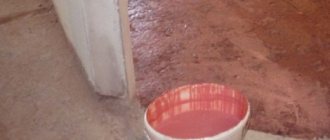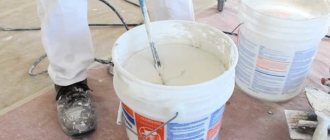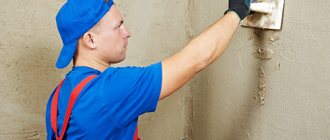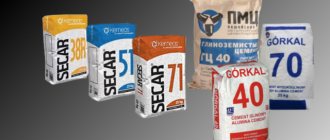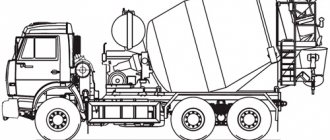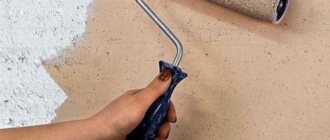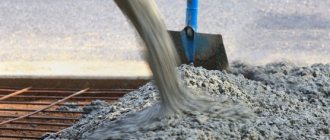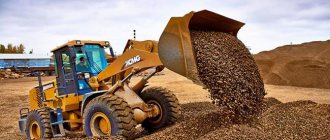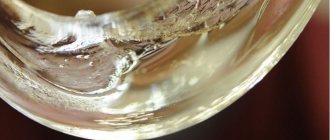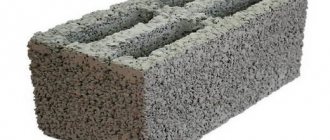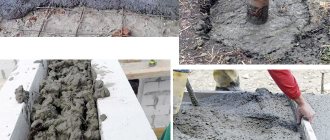Often the most important component of indoor renovation is smoothing the walls and ceiling. Nowadays, there are many plaster mixtures, but they are all divided into 3 classes: cement-sand, cement and gypsum mixtures. TM Rotband, Knauf company, is a leader in this field, having established itself as a high-quality and reliable manufacturer of universal gypsum plasters of all types.
Application area
Knauf mixtures are suitable for all types of finishing work. In the line of this manufacturer you will find ready-made mixtures for work both on internal and external walls, in buildings with low or high humidity, for old walls cracked from years of testing, both manually and machine-applied Rotband gypsum plasters. They are ideally combined with concrete, brick, foam plastic, fiberboard, as well as with already applied mixture! Rotband gypsum plasters are widely used in kitchens and bathrooms. Ideally connected to cleaned concrete walls and ceilings.
The first and most important thing that needs to be done in order for gypsum plaster to lay on the walls as efficiently as possible is to remove all dirt, all kinds of dust and peeling from them. Grind down conspicuous protrusions and metal corrosion protection elements. The application area must be completely dry and able to withstand the weight of the applied gypsum plaster, at a temperature of at least +5 °C.
Advantages and disadvantages
Absolutely all materials have their strengths and weaknesses, which you need to know about before purchasing. Despite the fact that Rotband plaster is the best solution for repairs, it is still worth talking about its advantages and disadvantages.
First, it’s worth listing the positive qualities of this mixture. She has a lot of them, and they are very valuable for both residential and non-residential premises. The main advantages of this plaster include:
- • fire resistance;
- • environmental cleanliness;
- • high adhesion to various surfaces;
- • high drying speed;
- • sound insulation;
- • plasticity;
- • vapor permeability.
Only the most important advantages of rotband gypsum plaster are listed here and in reality there are much more of them. You can also note that Rotband plaster is packaged in 30 kg packs, which is practical, as it allows you to purchase the required amount of material without a significant surplus. Taking into account the consumption of rotband plaster, the following consumption rate can be taken as a basis: one bag of the mixture per three and a half square meters of surface.
Unfortunately, you won’t be able to ignore the downsides, and it’s better to be prepared for them in advance. If we talk about qualitative shortcomings, then this is the need for priming with a special primer in the case of applying several layers of plaster. One of the disadvantages is the price of rotband plaster, which is noticeably higher than that of other types of similar plasters. However, calling this a minus is not entirely correct, since this cost is explained by much higher quality and durability.
Material calculation
It is important to understand how many meters of surface you need to process if you want to save your budget and not overpay for material that will then simply be stored in your garage. It is for this purpose that the consumption of gypsum plaster should be calculated.
For correct calculation, it is necessary first of all to take into account the thickness of the required application layer. To find out, craftsmen usually take measurements of irregularities along the entire length and width of the wall surface using special control point indicators. After summing up the resulting sum of deviations, they divide the sum of all points from which measurements were taken, thereby obtaining the average thickness of the required plaster. The number of counter-points plays a significant role; the more, the better the result. As a rule, the manufacturer indicates the required consumption of dry gypsum plaster per 1 sq.m. taking into account one layer of 10 mm, so what follows is nothing complicated, just mathematics. On Rotband bags it is always written what the dry mixture consumption will be per sq.m. - this will be approximately 8.5 kg, then you only need to multiply this value by the total surface area and the average thickness of the required layer. For example, to process a surface of 20 square meters, taking into account the obtained values at counter points: 1.7 cm, 6 cm, 1 cm, we calculate:
| formula | Answer | |
| Wed. application thickness, cm | 0.6 (min. wall height) + 6 + 1 = 7.6 7,6 / 3 = 2,5 | 2,5 |
| Consumption of gypsum plaster Rotband Knauf per 1 sq. m., kg | 8,5 * 2,5 = 19,5 19,5 | 19.5 |
| Volume per wall, kg | 20 * 19,5 = 396 396 | 396 |
| How many bags of dry mix are needed, pieces | 396 / 30 = 14,5 15 | 15 |
| Price of one bag 30 kg, rub. | 355-380 | |
| How much does Rotband gypsum plaster cost in total, rub? | 355 * 15 = 4705 380 * 15 = 4915 | 4705-4915 |
Installation of beacons
Apply the prepared Rotband solution to the treated base approximately every 30 centimeters, followed by pressing in the indicator profiles, and then make sure that they are all in the same plane. The distance between profiles should be no more than 30 cm.
Installation of protective corners
The already mixed solution of Rotband Knauf gypsum plaster must be spread on the inside of the profile, also in long increments of 30 centimeters.
Important! The installation of the profiles must take place in the same plane as the beacon profiles.
Technical characteristics of Knauf Rotband plaster
| Layer thickness, mm - wall -ceiling | 5-50 5-15 |
| Drying time, days | 7 |
| Consumption with a spray thickness of 10 mm, kg/m2 | 8,5 |
| Fraction size, mm, no more | 1,2 |
| Density after hardening, kg/m3 | 950 |
| Strength, MPa - bending - for compression | 1,0 2,5 |
| Shelf life, months | 6 |
Preparation of plaster solution
As for preparing the solution, the dry mixture/water ratio will be 1 to 3 or 1 to 5. This amount will be ideal in order to avoid possible uneven setting of the solution in the future. When you have applied the first layer of plaster, you should not immediately start applying the second; let the previously applied layer dry and when it is completely dry, repeat the procedure.
Important! Avoid dusting the ground surface.
Before cooking, it is advisable to get a plastic tank already filled with about 18 liters of water filtered from dirt (if it is dirty). Taking into account the proportions, pour in five to seven trowels of plaster and mix. After the solution begins to change its consistency, add the entire mass from the bag and mix with a plaster mixer until you get a homogeneous mass without lumps. Let the resulting solution sit for about five minutes, and then stir again to make sure there are no defects in the mixture. If you notice that the mixture is too thick, add some water.
Attention! Do not try to add water while applying the mixture to the walls - this will only be a disadvantage!
Also, you should not experiment and add other components to the solution; in most cases, this will only cause harm.
Gypsum plaster Rotband. Application
Approximately 25 minutes after the solution has assumed a homogeneous mass, it should begin to be applied to the surfaces to be treated; the layer thickness should be from five to fifty millimeters. As for the application process, for the ceiling, you should apply gypsum plaster with a special plaster falcon, moving towards yourself. For walls, it is also necessary to spread the plaster with a “falcon” up/down or using a trowel. After this, you should level out the entire applied mass using zigzag movements.
In the case when it is necessary to apply a large layer of plaster, you should first apply the first layer of the permissible thickness and only when it is completely dry, continue applying the next one until you get the thickness you need. As a rule, this is not required for ceilings; a maximum of one layer of gypsum plaster is enough.
Smoothing the surface
When the gypsum plaster has already visually set, thereby visually beginning to acquire a matte tint, it should be smoothed out with a large spatula, making wide longitudinal movements. After this, you can safely glue wallpaper to the surface. If you want to achieve glossiness from the applied Rotband plaster, then you need to do the following: 2.5 - 3 hours after applying the plaster to the surface, apply a moisturizing layer of water, then smooth the applied mass again using a metal grater.
Structuring the surface
Professionals know about this, but you may not have heard yet that the applied Rotband gypsum plaster does not have to be left in the perfectly uniform and smooth form in which you applied it. Many people like to give the applied mass various shapes and even designs!
All you need to do for this is to roll a handy textured roller over the mass that has not yet completely hardened, or use a creative approach and draw a wide variety of designs using the tools available to you.
Main advantages
The range provided by Knauf is wide and varied. Rotband plaster has two forms of release: cement-sand and gypsum. Hand-made plaster cannot compete with Rotband mixtures for a number of reasons:
- Rotband plaster is of better quality,
- the manufacturer guarantees the durability of the results when using its products,
- with proper work
Gypsum plaster
There is no possibility of marriage with Knauf Rotband plaster.
The market for plaster mixtures is rich. High competition forces many manufacturers to constantly improve the quality of their products by adding various additives to plaster mixtures. Knauf Rotband is no exception. Among the variety of plasters from this company you can find both facade and interior decoration, including rooms with constantly high air humidity. Its main advantages are resistance to moisture, mechanical damage, and durability.
In any case, we should not forget that working with cement-sand plaster requires certain professional training. It is better to entrust it to a specialist in order to avoid a low aesthetic effect of the final result of plastering.
Small tricks
If you want to get the desired result in the shortest possible time, then in order for the plaster to dry quickly, we advise you to ensure high ventilation of the premises. In the case of using decorative variations of plasters, the application area should be pre-coated with a primer.
Probably the main question that torments everyone after application is how long does it take for Rotband gypsum plaster to dry? Let us answer right away that the complete drying time is usually about 7 days, depending on external conditions.
Also, do not use already contaminated containers and devices for applying plaster several times. All this will only shorten the “life” of the plaster mass, so try to wash your tools with water after each layer of plaster.
KNAUF-Rotband is a universal dry plaster mixture based on gypsum with polymer additives that provide increased adhesion.
Packaging format
KNAUF-Rotband 30 kg
KNAUF-Rotband 10 kg
Application area
Designed for high-quality plastering of ceilings and walls with a conventional solid base, for example, concrete, brick, cement plaster, as well as surfaces made of polystyrene foam, DSP.
Particularly recommended for smooth concrete ceiling and wall surfaces.
Can be used for finishing rooms with normal humidity, as well as in kitchens and bathrooms.
For interior work.
Advantages
- KNAUF-Rotband gypsum plaster provides a smooth surface that does not require additional putty.
- Does not crack even with a thick layer.
- The consumption of KNAUF-Rotband gypsum plaster is 2 times less than traditional cement-sand plaster mixtures.
- Application of a plaster layer up to 50 mm thick in one stroke without preliminary spraying. If necessary, thicker layers can be applied in two coats.
- The versatility of the material allows for simultaneous plastering and puttying, production of decorative elements, repair and restoration work.
- High water-holding capacity - the mortar mixture does not separate and does not dehydrate even on porous substrates that absorb moisture well and at elevated temperatures.
- Regulates the humidity in the room - “breathes”, creating a favorable microclimate in the room.
- The material is made from environmentally friendly natural mineral (gypsum) and does not contain substances harmful to human health.
Characteristics
| Thickness of one layer: | |
| minimum | 5 mm |
| maximum | 50 mm |
| Consumption at 10 mm layer | ~ 8.5 kg/m2 |
| Drying | ~ 7 days |
| Maximum fraction size | up to 1.2 mm |
| Strength: | |
| for compression | > 2.5 MPa |
| bending | > 1.0 MPa |
| Solid Density | ~ 950 kg/m3 |
| Package | paper bag 30, 25, 10 or 5 kg polyethylene bag 5 kg |
| Shelf life | 6 months in undamaged packaging |
Gypsum dry mixes can come in a variety of colors, from white to gray and even pink. This is due to the presence of natural impurities in gypsum stone. The color of the mixture does not affect its characteristics in any way.
Recommendations
To ensure quick drying of the plaster, it is necessary to ensure good ventilation of the room. Before applying the decorative coating, treat the plaster with KNAUF-Tiefengrund primer.
The water temperature for mixing the dry mixture should be in the range from +5°C to +30°C. Warmer water degrades the water-holding capacity of the plaster mortar and can cause cracks in the plaster.
